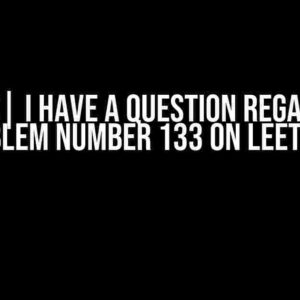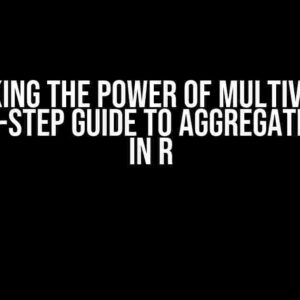Introduction
When working with datasets, it’s not uncommon to encounter missing values or groups of uneven length. This can be problematic when trying to analyze or visualize the data, as many algorithms and tools require complete and evenly structured data. In this article, we’ll explore a practical solution to complete and fill missing rows with groups of uneven length.
The Problem
Imagine having a dataset with multiple groups, each having a varying number of rows. For instance, you might have a dataset with customer information, where each group represents a region, and the number of customers varies across regions.
This unevenness can lead to issues when trying to perform statistical analysis, data visualization, or machine learning tasks. Many algorithms require a consistent and complete dataset to produce accurate results.
The Solution
To complete and fill missing rows with groups of uneven length, we can utilize the following approach:
-
Identify the groups with missing values or uneven length.
-
Determine the maximum number of rows required for each group.
-
Fill the missing values with a suitable placeholder or imputed value.
-
Repeat the placeholder or imputed value to complete the group to the maximum length.
Example
Suppose we have a dataset with customer information, divided into three regions: North, South, and East. The number of customers in each region varies, resulting in uneven groups.
- North: 5 customers
- South: 3 customers
- East: 4 customers
To complete and fill the missing rows, we identify the maximum number of rows required as 5 (from the North region). We then fill the missing values with a suitable placeholder, such as ‘NA’ or 0, and repeat it to complete each group to the maximum length of 5:
- North: 5 customers (no change)
- South: 3 customers, 2 NA values
- East: 4 customers, 1 NA value
Conclusion
By following this approach, you can complete and fill missing rows with groups of uneven length, ensuring that your dataset is consistent and ready for analysis or visualization. Remember to choose a suitable placeholder or imputation method based on your specific use case and data characteristics.
Frequently Asked Question
Get ready to elevate your data manipulation game with our expert answers on completing and filling missing rows with groups of uneven length!
What is the main challenge when dealing with groups of uneven length?
The main challenge is ensuring that the data is accurately aligned and accounted for, despite the varying lengths of the groups. This can be particularly tricky when working with datasets that have a mix of short and long groups.
How do I identify groups of uneven length in my dataset?
One way to identify groups of uneven length is to use aggregation functions, such as COUNT or SUM, to get a sense of the distribution of values within each group. You can also use visualization tools, like bar charts or histograms, to get a visual representation of the data.
What are some common techniques for completing and filling missing rows with groups of uneven length?
Some common techniques include using padding or interpolation to fill missing values, as well as using aggregation functions to merge or split groups. Additionally, you can use machine learning algorithms, such as k-nearest neighbors or decision trees, to impute missing values based on patterns in the data.
How do I decide which technique to use for completing and filling missing rows?
The choice of technique depends on the nature of the data, the type of analysis being performed, and the level of accuracy required. For example, if the data is relatively simple and the missing values are random, padding or interpolation may be sufficient. However, if the data is complex or has a non-random pattern of missing values, a more sophisticated approach like machine learning may be needed.
What are some best practices for working with groups of uneven length?
Best practices include being mindful of the assumptions underlying each technique, using validation and verification methods to ensure accuracy, and documenting the process and results to facilitate reproducibility and transparency.



